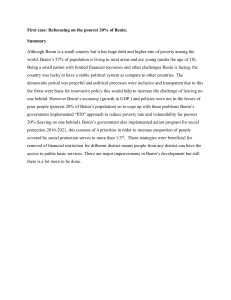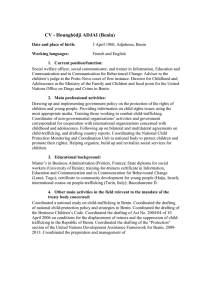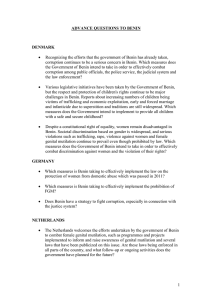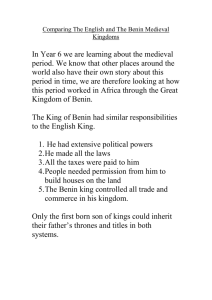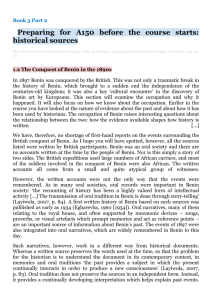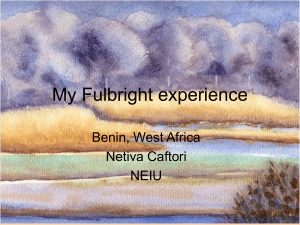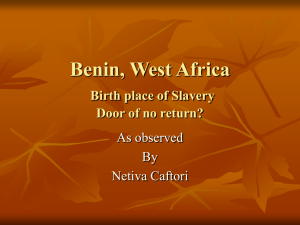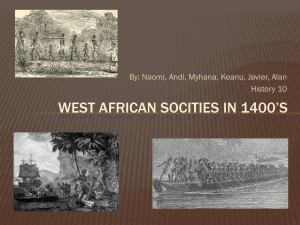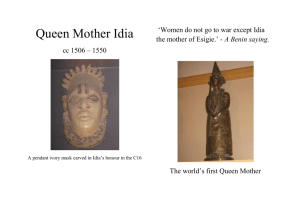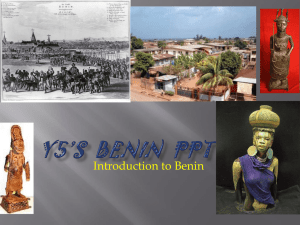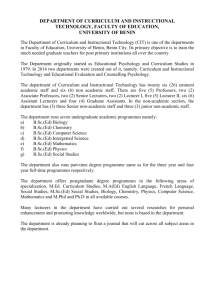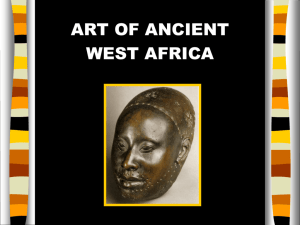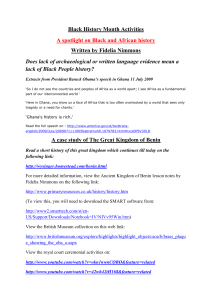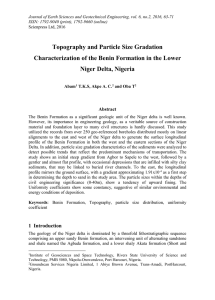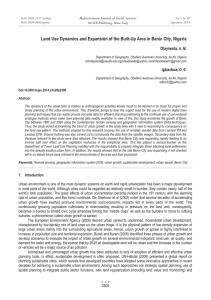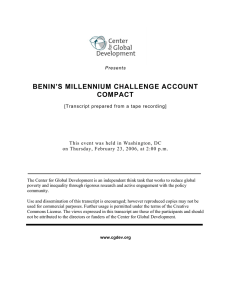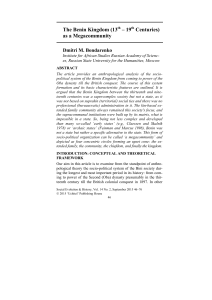Schaefer, Ron - On the Historical Evolution of the Benin Kingdom
advertisement
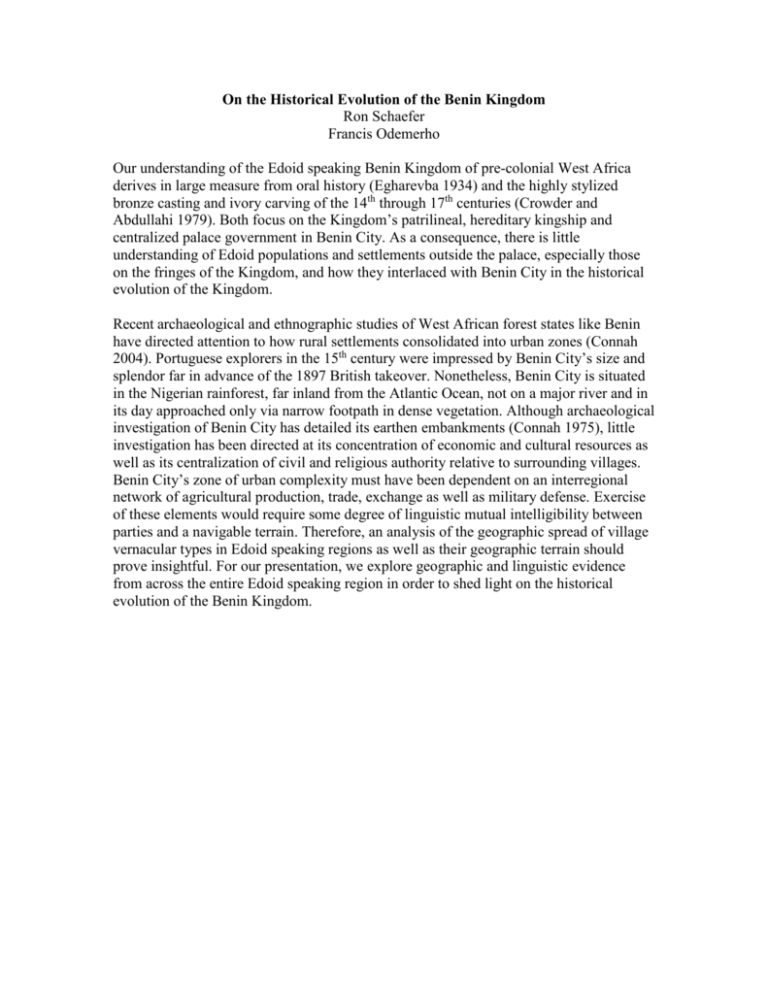
On the Historical Evolution of the Benin Kingdom Ron Schaefer Francis Odemerho Our understanding of the Edoid speaking Benin Kingdom of pre-colonial West Africa derives in large measure from oral history (Egharevba 1934) and the highly stylized bronze casting and ivory carving of the 14th through 17th centuries (Crowder and Abdullahi 1979). Both focus on the Kingdom’s patrilineal, hereditary kingship and centralized palace government in Benin City. As a consequence, there is little understanding of Edoid populations and settlements outside the palace, especially those on the fringes of the Kingdom, and how they interlaced with Benin City in the historical evolution of the Kingdom. Recent archaeological and ethnographic studies of West African forest states like Benin have directed attention to how rural settlements consolidated into urban zones (Connah 2004). Portuguese explorers in the 15th century were impressed by Benin City’s size and splendor far in advance of the 1897 British takeover. Nonetheless, Benin City is situated in the Nigerian rainforest, far inland from the Atlantic Ocean, not on a major river and in its day approached only via narrow footpath in dense vegetation. Although archaeological investigation of Benin City has detailed its earthen embankments (Connah 1975), little investigation has been directed at its concentration of economic and cultural resources as well as its centralization of civil and religious authority relative to surrounding villages. Benin City’s zone of urban complexity must have been dependent on an interregional network of agricultural production, trade, exchange as well as military defense. Exercise of these elements would require some degree of linguistic mutual intelligibility between parties and a navigable terrain. Therefore, an analysis of the geographic spread of village vernacular types in Edoid speaking regions as well as their geographic terrain should prove insightful. For our presentation, we explore geographic and linguistic evidence from across the entire Edoid speaking region in order to shed light on the historical evolution of the Benin Kingdom.
